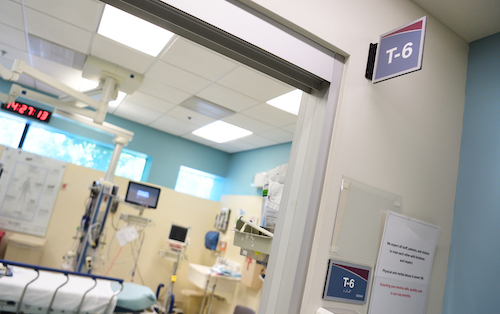Tele-Observation Medicine
Just as the emergency departments serve as the safety net of a health system, observation units have served as the safety net of the emergency department. These units have been shown to decrease inappropriate ED discharges, decreasing diagnostic uncertainty, preventing avoidable admissions, while preserving health care costs and resource utilization.
These units can be used to facilitate the care of observation patients during normal operations, and during a disaster. When disasters occur, a significant portion of impacted patients fall into the “6-24 hour” window of care that observation units provide.
Historically observation units have played a pivotal role in allowing hospitals to respond to epidemics and disasters. Allowing hospitals to efficiently treat patients impacted by a disaster, to cohort patients in a flexible space proximate to the ED, and by allowing health systems to optimize resource utilization in their times of greatest need.

Virtual rounding with telemedicine in protocol driven observation units is non-inferior to in-person rounding with an advanced practice provider. Observation patients represent 20-36% of patients staying in a hospital. Tele-observation allows hospitals to develop and staff these units on a daily basis. This has been shown to decrease observation patient length of stays by 20-30 hours per case and hospital costs by over $1,000 per case. These benefits can help struggling hospitals to meet economic and staffing challenges. More importantly, in the setting of a disaster having a telemedicine infrastructure in place can allow hospitals to rapidly deploy the observation unit and telemedicine in any one of a number of ways to address the demands of the situation.
Virtual rounding in an emergency department observation unit can be a tool to optimize patient care with hospitals unable to staff observation units while not compromising quality and performance metrics. In its best practices guidelines for emergency departments, Medicare describes virtual rounding as a way that “Providers can use telehealth technology to check on emergency department patients virtually. This helps limit the number of providers who are physically present and exposed to contagious diseases. It also saves time and conserves personal protective equipment.
The COVID-19 pandemic created an immediate need to expand the role of telehealth across the healthcare system. In the emergency departments it provided the opportunity to safely minimize physician exposure to COVID-19 patients while minimizing the use of limited personal protective equipment resources. Telehealth has also impacted emergency department visits. With the declaration of the public health emergency and subsequent introduction of telehealth waivers and the CARES act in March 2020, there was a decline in emergency department visits with a corresponding rise in telehealth encounters.